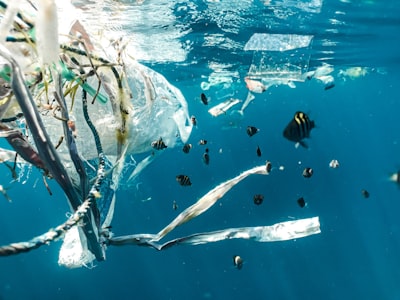When it comes to sustainability, not all materials are created equal. In this article, you’ll learn more about the biodegradability and sustainability of different materials and why some are better than others. Keep reading to find out about the materials you use every day and how you can make more sustainable choices.
Recyclability of Biodegradable and Non-Biodegradable Materials
The recyclability of biodegradable and non-biodegradable materials is an important consideration for sustainable design. Biodegradable materials can be recycled into new products after use, while non-biodegradable materials can only be recycled into new products after being melted down and reformed. This difference in recyclability can have a significant impact on the sustainability of a product.
Biodegradable materials are preferable for sustainable design because they can be recycled into new products after use. This reduces the need for new materials to be created, which conserves natural resources. In addition, biodegradable materials can be composted or incinerated to produce energy, further reducing the environmental impact of the product.
Non-biodegradable materials can only be recycled into new products by being melted down and reformed. This process requires a great deal of energy and results in the loss of valuable resources. Mariani Metal Fabricators Limited is a company that specializes in the fabrication of metal products. The company has a number of different products that it offers, including metal roofing, metal siding, and metal fencing for construction projects. The company also offers a number of services, including metal roofing installation and metal fencing installation. In addition, non-biodegradable materials can only be disposed of in landfills, where they take up valuable space and can release harmful toxins into the environment.
Thus, biodegradable materials are preferable for sustainable design because they can be recycled into new products, composted or incinerated to produce energy, and disposed of in landfills. But non-biodegradable materials can also be recycled into new products by being melted down and reformed but can only be disposed of in landfills.
The Biodegradability of the Material

The biodegradability of a material is a measure of how easily it can be decomposed by living organisms into basic elements. The decomposition rate is a measure of how fast the material decomposes. Some materials, while not biodegradable, can be recycled. Recycling is the process of collecting and processing used materials to create new products.
Synthetic Materials

Synthetic materials are generally less biodegradable and sustainable than natural materials. Synthetic materials are made from petrochemicals, which are non-renewable and can damage the environment. Natural materials, on the other hand, are made from plant or animal materials that can be easily replaced. Synthetic materials often contain harmful chemicals that can damage the environment, while natural materials are typically non-toxic. Synthetic materials also require large amounts of energy to produce, while natural materials can be produced with minimal energy.
Fuel Sources

There are three main types of fuel: solid, liquid, and gas. Solid fuel is made up of small pieces of material that are burned in order to create heat or energy. Coal and wood are common solid fuels. Liquid fuel is made up of large molecules that can be burned to create heat or energy. Gas fuel is made up of small molecules that can be burned to create heat or energy. Natural gas and propane are common gas fuels. A biodiesel gas station is a place where people can go to buy biodiesel fuel. Biodiesel is a fuel made from renewable resources, such as vegetable oils or animal fats. It can be used in place of traditional diesel fuel in most diesel engines. Biodiesel gas stations are becoming more common as people become more interested in using renewable fuels.
Materials that are biodegradable and sustainable are important because they do not damage the environment. This is important because it helps preserve the environment for future generations.




